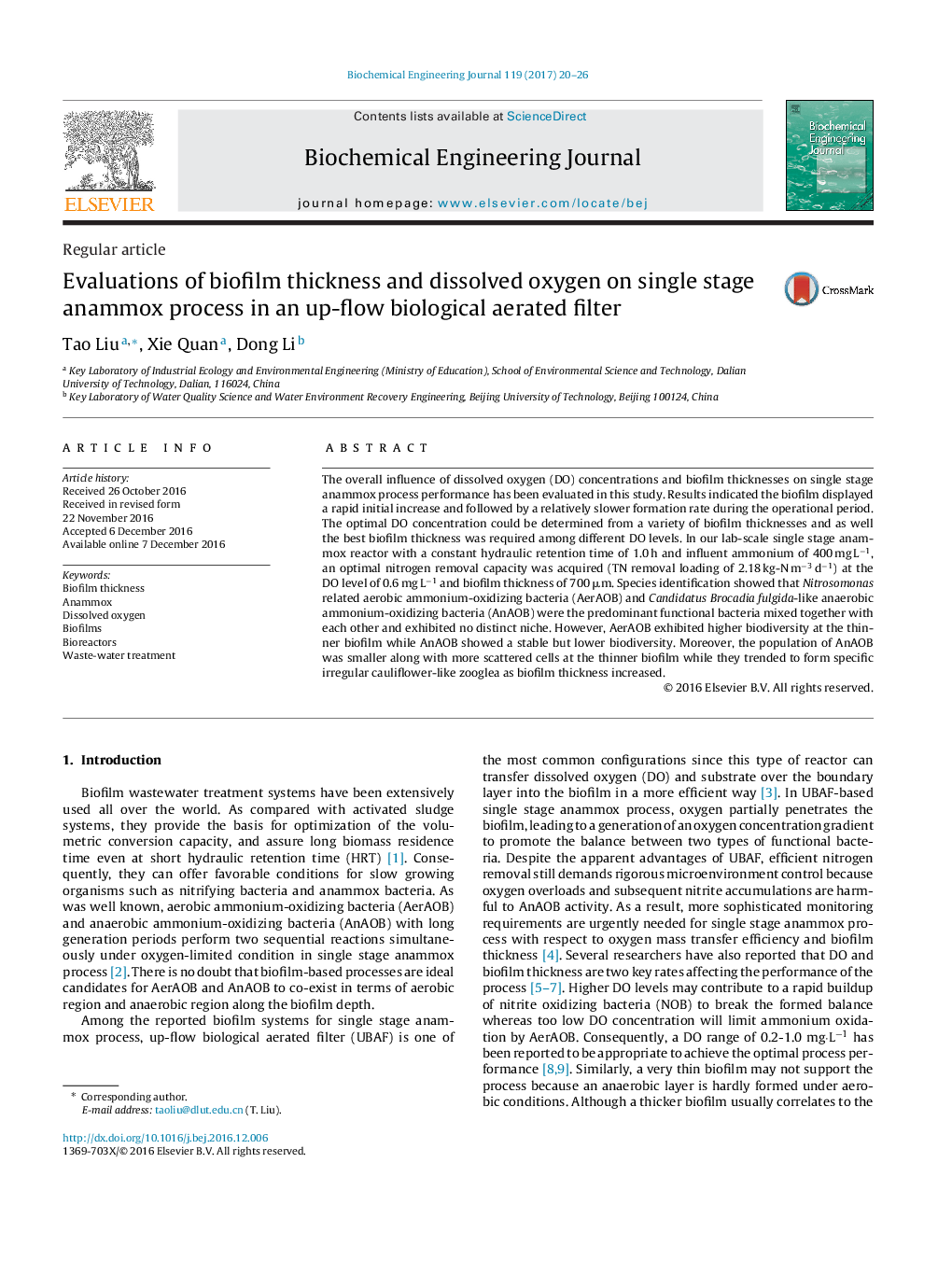| Article ID | Journal | Published Year | Pages | File Type |
|---|---|---|---|---|
| 6450411 | Biochemical Engineering Journal | 2017 | 7 Pages |
â¢Biofilm displayed a quick development initially but slowed down during operation.â¢Optimal DO level could be determined by different biofilm thicknesses and vice versa.â¢Optimal N-removal was achieved at DO of 0.6 mg Lâ1 and biofilm thickness of 700 μm.â¢AerAOB and AnAOB mixed with each other and showed no distinct niche.â¢Specific cauliflower-like zooglea formed with the increase of biofilm thickness.
The overall influence of dissolved oxygen (DO) concentrations and biofilm thicknesses on single stage anammox process performance has been evaluated in this study. Results indicated the biofilm displayed a rapid initial increase and followed by a relatively slower formation rate during the operational period. The optimal DO concentration could be determined from a variety of biofilm thicknesses and as well the best biofilm thickness was required among different DO levels. In our lab-scale single stage anammox reactor with a constant hydraulic retention time of 1.0 h and influent ammonium of 400 mg Lâ1, an optimal nitrogen removal capacity was acquired (TN removal loading of 2.18 kg-N mâ3 dâ1) at the DO level of 0.6 mg Lâ1 and biofilm thickness of 700 μm. Species identification showed that Nitrosomonas related aerobic ammonium-oxidizing bacteria (AerAOB) and Candidatus Brocadia fulgida-like anaerobic ammonium-oxidizing bacteria (AnAOB) were the predominant functional bacteria mixed together with each other and exhibited no distinct niche. However, AerAOB exhibited higher biodiversity at the thinner biofilm while AnAOB showed a stable but lower biodiversity. Moreover, the population of AnAOB was smaller along with more scattered cells at the thinner biofilm while they trended to form specific irregular cauliflower-like zooglea as biofilm thickness increased.
